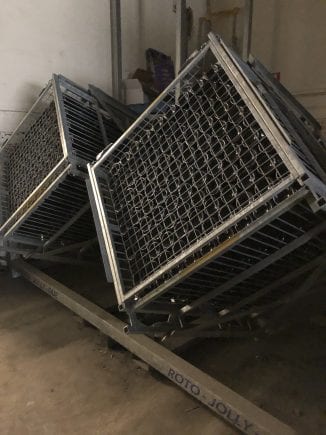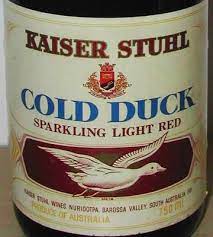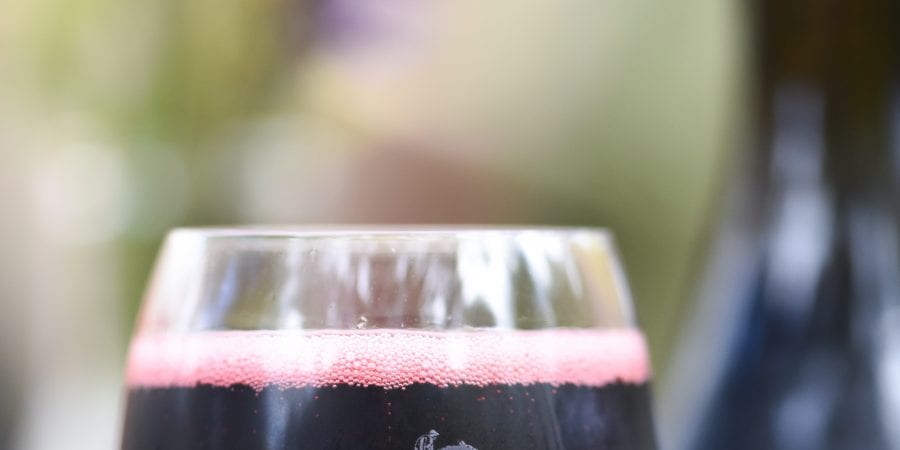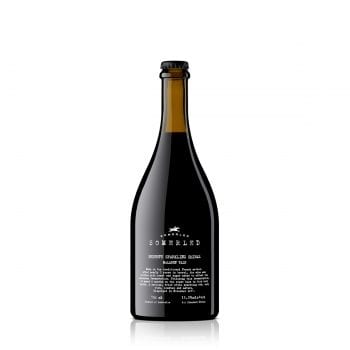I’m just too darn excited to wait until it is officially here!
We’ve been without our Sparkling Shiraz now for longer than I care to remember. And what a difficult time it has been for all of us!
It’s taken a little longer to get through the winery than we had hoped, but good things come to those who wait, right? And the wait is almost over. Just one more week (give or take a few days!) and our 2018 Sparkling Shiraz it will be ready to purchase, ship and pour!
Want to secure a bottle or two now? Head on over to our website to place your pre-order.
But for those of you new to Sparkling red wine…
What is it? Where did it originate? And why is ours so delicious?
It’s sparkling and it’s red
Yep… that pretty much sums it up!
You will most usually see sparkling red made from Shiraz grapes. However black grape varieties such as Pinot Noir, Cabernet Sauvignon, Merlot and Durif are also commonly used.
 It is made in the same way as our sparkling white using the traditional method following these steps…
It is made in the same way as our sparkling white using the traditional method following these steps…
- The grapes are pressed and go through a primary fermentation like any other table wine. It is then bottled.
- A second fermentation is induced by adding more yeast and sugar (usually in the form of grape juice). A crown seal (like a beer bottle) is added to the bottle and the fermentation occurs in the bottles, which creates the bubbles.
- The wine is then left to sit on yeast lees. In Champagne, the minimum amount of time specified by the appellation is 1.5 years. This is also the minimum amount for Rob, but he usually leaves it to mature for much longer than this.
- After aging, a process called remuage (or “riddling” in English) is performed either manually or mechanically, to gradually invert the bottle and settle the lees into the neck.
- The neck of the bottle is frozen, whereupon the lees freeze to a solid block, and the crown seal is removed. The pressure in the bottle forces the frozen lees out of the bottle. The wine is then topped up with additional wine (le dosage) and quickly corked (or another crown seal added) to maintain the bubbles. The dosage is not only designed to replace the volume lost during the disgorging process but gives the winemaker a chance to adjust the sweetness of the wine. For Rob, the dosage he uses is much drier than most.
Sparkling Shiraz
Appearance: should be deep crimson red in colour with a fine persistent bead. When poured, it should form a strong crimson red ‘mousse’ (like the one in the feature image of this post!).
Aromas and flavours: Primary fruit characters such as spice, ripe berry fruits, licorice, etc. The developed secondary characters may include earthy, mushroom and chocolate (yum!)
The palate should be rich, full-flavoured and complex, with soft tannins and sweet berry fruits.
(Is it too early for a glass now??!)
Is it an Australian thing?
It is produced in other parts of the world. Probably most famously in Emilia-Romagna in Italy which is the home of “Lambrusco”. However, there is nothing quite like the way Australia has adopted and adapted sparkling red wine to make it uniquely our own.
History
“Sparkling Burgundy” was first produced from Pinot Noir grapes in the Burgundy region (obviously!) of France back in 1820.
Our first sparkling red was made in 1881 by a Melbourne doctor and a French Champagne maker. Then in 1893 Edmund Mazure (another French winemaker) made a sparkling red wine using a Shiraz base at the Auldana winery here in Adelaide (just behind Penfold’s Magill Estate).

Around the same time, Ballarat businessman Hans Irvine took over the Great Western winery and started making sparkling wine comparable with French Champagne. When Hans retired in 1918, Seppelt took over the winery and continued to make some excellent sparkling reds. A winemaker by the name of Colin Preece made some of the finest sparkling reds for Seppelts back in the 30s and 40s. If you can track one down, apparently they are still drinking beautifully!
Then came along a cheap imitation called ‘Cold Duck’! That’s when drinking sparkling red at your dinner party became one of the biggest social faux-pas. But thanks to the cellar hands at Seppelt Great Western who had kept a secret stash of Colin Preece’s sparkling reds, the style re-emerged in the 80s.
Regions
It’s hard not to look past South Australia. The Barossa Valley, McLaren Vale, Coonawarra, Limestone Coast and Langhorne Creek regions all have a long history of producing rich, concentrated Shiraz. So it makes sense that you’re going to find some sensational examples from these regions.
Considering its long history, Great Western obviously produces quality sparkling reds. As does the Yarra Valley and Rutherglen.
 Somerled 2018 Sparkling Shiraz
Somerled 2018 Sparkling Shiraz
Unique to our Sparkling Shiraz is the fact that it starts out as a very complex and developed wine, having had over two years in barrel as part of the Somerled Shiraz parcel.
It is then bottled and the very fine bead is created by the exacting Methode Traditionelle, which creates further complexity during this second fermentation.
Also unique is the noticeable dryness of the wine. Sparkling red wines do require a touch of sweetness to be palatable. Some Australian sparkling reds can have up to 40 grams per litre of residual sugar per litre. But Rob dares to keep the level of sugar in his version very conservative, creating a sophisticated, complex, balanced and moreish Sparkling Shiraz.
It doesn’t get much better than this!!
Are you like me and can’t wait for this one to be back on our list? Head over to our website now to place your pre-order.

